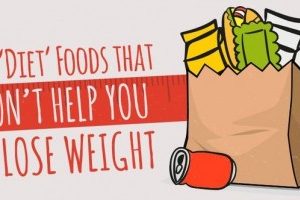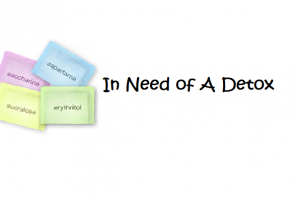I am currently in contest prep dieting down for a bodybuilding competition. One night as I was planning my macros for the next day. They were a little over and being as hungry as I am I thought… do the carbs in a Quest Nutrition bar I have planned really matter. It does say pre-biotic corn fiber and only 4 net carbs which got me thinking and birthed this post.
Quest bars have undoubtedly gotten me through this prep as my last meal before bed or quick snack. It tastes like a dessert (and even more so in contest prep) and I often like to sit down after my kids to to sleep and enjoy this without little people all up in my biz. And conveniently, Quest Nutrition claims 4 net carbs per bar….What are net carbs?
Total Carbs – Fiber – Sugar alcohols = Net Carbs
Example: 20g Carbs – 14g Fiber – 2g Erythritol = 4g Net Carbs
Bonus right! Not so fast.
For my diet, I count every carb– including fiber and sugar alcohols. I eat pretty clean as consistency is really important in prep, especially close to a show because total carbs in a Poptart is not the same as total carbs in broccoli. So count net carbs you say, well, that is where it can get tricky.
Why do I count all carbs including fiber and sugar alcohols?
First let’s cover the types of fiber and then explain what sugar alcohols are.
Fiber
 Insoluble fiber does not dissolve in water and bypasses the small intestine. It is not fermented or broken down by gut bacteria in the colon but it does hold water to help you soften stool and keep you regular.
Insoluble fiber does not dissolve in water and bypasses the small intestine. It is not fermented or broken down by gut bacteria in the colon but it does hold water to help you soften stool and keep you regular.
Soluble fiber also bypasses the small intestine but is partially broken down and used to feed your gut bacteria. This much needed gut bacteria feed on the soluble fiber producing short chain fatty acids which can then be used by your body. So yes, fiber has calories.
Here is the problem with counting net carbs (total carbs- fiber). Food labels don’t distinguish between these two fiber types so it can be hard to say how much of either fiber you are getting. And then you have to ask yourself how many calories you are getting from that unknown amount of soluble fiber? Do we know? Nope.
Do these carbs raise blood sugar. No. That is a win. (remember this point for later)….
The bottom line: to say that fiber is a “free” food is not correct. For a person worried about everyday fitness and health, it won’t matter as much as for a person in prep trying to get super lean (ie: those in contest prep for a bodybuilding show). Your body gets damn efficient with calorie sources when it thinks you are starving to death- literally, and you decide to eat 5 Quest bars only counting the 4 net carbs per bar on your IIFYM diet— it might just add up.
IIFYM= If It Fits Your Macros
Macros = protein, carbs and fats
Sugar Alcohols
 Sugar alcohols are low cal sweeteners like sorbitol, mannitol, xylitol, maltitol, maltitol syrup, lactitol, erythritol, isomalt and hydrogenated starch hydrolysates. Not to be confused with artificial sweeteners like sucralose and ace K which don’t count for any calories and are not digested.
Sugar alcohols are low cal sweeteners like sorbitol, mannitol, xylitol, maltitol, maltitol syrup, lactitol, erythritol, isomalt and hydrogenated starch hydrolysates. Not to be confused with artificial sweeteners like sucralose and ace K which don’t count for any calories and are not digested.
Sugar alcohols are found in sugar free gum, supplements like protein powder and BCAA’s, Truvia low cal sweetener etc.
Sugar alcohols are partially digested in the small intestine yielding a calorie count of zero to three calories per gram compared to four calories per gram for sugar.
Like fiber, it’s is hard to differentiate the calories that are coming from sugar alcohols that are partially broken down. Can we really subtract the total amount of sugar alcohols from our carb count?
Bottom line: If you base your diet off of macros, counting net carbs gets tricky when soluble fiber and sugar alcohols do count for some calories which are not accurately measurable. Especially when nutrition labels are already on average 25% off with protein, carb and fat amounts.
Net carbs in protein bars
Back to protein bars and fiber types. Quest formerly used a fiber source called isomalto-oligosaccharides (IMO). Oh Yeah One bars (very tasty) and FitJoy bars currently use this fiber type.
While Quest Nutrition was claiming 4 net carbs per bar they were sued in 2013 because tests results showed that their nutrition labels were not accurate as they had over stated fiber and understated calorie content. (Read more in these articles: IMOs and the lawsuit against Quest Bars: What you need to know and Quest Bars Using Soluble Corn Fiber . ) The lawsuit was later dropped FYI.
Furthermore, Quest bars were shown to raise blood sugar levels in diabetic populations as they are constantly testing their blood sugar. Read more here on that for an accurate depiction and interview with a Quest Rep: High-fiber foods and blood sugar – Quest Protein Bar Interview. In the interview, it was stated that Quest had never tested it’s bars and the effects it had on blood sugar levels even though it claimed 4 net carbs and a ton of fiber which should not increase blood sugar levels. It was also suggested that whey protein in the bars was the culprit but the population found that Quests’ whey protein did not increase their blood sugar levels like the bars themselves did.
This article Isomalto-oligosaccharides in nutrition bars: Not so guilt-free by Steve Hertzler, PhD, RD, LD shows that IMO’s have been shown to have caloric value and raise blood sugar levels. He states that “it would be wrong to assume that the carbohydrates from IMO’s don’t count as available carbohydrates.” Why? Due to the structure of IMO’s, some of the bonds that hold the IMO chain together can be broken down by an enzyme in the small intestine making an IMO partially digestible giving it caloric value. (hit up this article for all the scientific terms and jargen 😀 I just simplified it for ya’ll. )
Are IMO’s a big deal? Yes and no. If you are a diabetic or a bodybuilder trying to get super lean, this might concern you. If you are in general health and fitness, no, this probably doesn’t impact your diet that much. Especially if you are eating less than two a day.
At any rate, Quest switched to corn fiber. According to Fiberfacts.org (and a list of other studies) , corn fiber “elicits a low glycemic response and supports a postprandial blood glucose and insulin lowering effect when used to replace sugars.” In lay people terms, blood sugar level impact is minimal. And is of course, more beneficial to use than sugar (as are IMO’s). Corn fiber does bypass the small intestine and heads to the colon for fermentation by gut bacteria. Remember that point I said to keep in mind under soluble fiber above… well…these gut bacteria produce short chain fatty acids feeding on soluble fiber which can then be used as calories by your body. So sure, it counts for some calories, but how much for sure? Who knows. Of course I am picky… I am a bikini bodybuilder.
What about inulin? Another common fiber additive. Inulin is digested similarly to corn fiber. It bypasses the upper digestive tract and is fed on by the bugs in your colon. The fatty acid byproduct can then be used as energy by your body with a caloric value somewhere between 0 and 2.5 kcal/g, ref 1.
Bottom line
- Soluble fiber is not calorie free
- Sugar alcohols are not calorie free
- IMO’s used in FitJoy and Oh Yeah One bars have been shown to spike blood sugar levels denoting that the fiber source is in fact digested in the small intestine and used for calories
- Corn fiber used in Quest bars and inulin has been shown to minimally impact blood sugar and to bypass the small intestine.
- For general health and fitness, this info may not matter a whole heck of a lot to you.
- If you are a diabetic or bodybuilder (including bikini, figure and physique), then yes, this will matter to you. Especially when you are hungry and rationalize all the”net carbs” after eating 5 Coconut Oh Yeah One bars. You may have over consumed calories and might have trouble getting really lean. Your body gets super efficient when it thinks you are quite literally dying.
- Just be consistent and pick one: count all carbs or net carbs. For competitors, be consistent with foods you generally eat when you start getting close to stage lean.







What are your thoughts? Comment below.